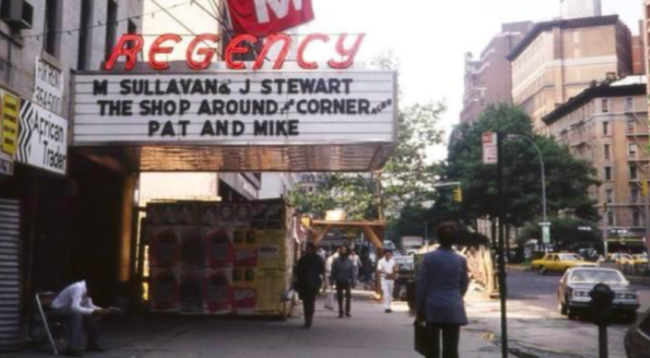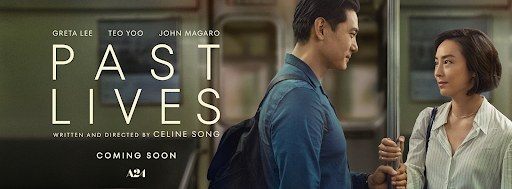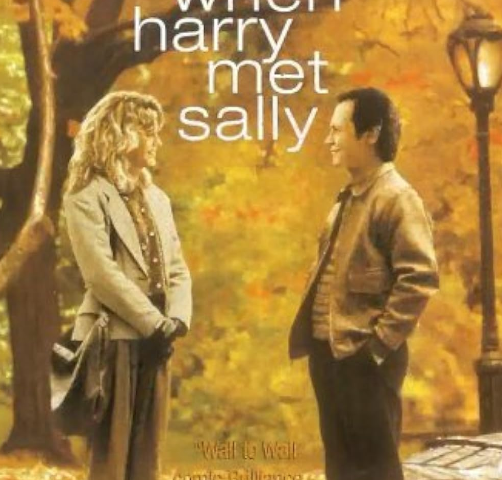The soft scent of buttered popcorn wafts through the air. The family to your left has just settled into a brief state of calm before all chaos erupts again, and the usual repertoire of trailers and ads comes to a close. You are finishing up the list of films you have yet to see but will likely forget about once the iconic notes of a Warner Bros or Paramount credit sound. There is a film to be screened, art to be experienced and no feeling quite like it.
This feeling is that of the sacred environment of a movie theater: a place where film aficionados and tentative first date-goers join to view stories on “the big screen” and share their reactions in real-time. At the theater, no detail can be missed. Speakers place patrons in a bubble of auditory euphoria and screens spanning entire walls let onto each visual cue that filmmakers intend for their pictures. Movie theaters allow films to be appreciated or demeaned in their entirety via an engaged audience focused only on the story in front of them. They are a world of possibility as crowds sport vibrant hues of pink for movies like Barbie and pockets stuffed with tissues for more melancholy pieces like The Banshees of Inisherin. Even so, movie theaters are disappearing hastily, and their perceived purpose with them.
A Statista survey noted that from November 2018 to June 2020, the 28% of respondents that had strongly preferred viewing movies in theater dwindled to a mere 14%. All the while, streaming services that were in 2018 favored by 15% of survey participants became the popular choice of 36% of participants in 2020. While the decline in movie theater popularity could at first be attributed to safety precautions and the pandemic’s 2020 peak, the movie theater industry continues to fight the convoluted battle of streaming.
As the Cinema Foundation’s first ever state-of-industry report noted the closure of 5.3% or 2,100+ United States theaters between 2019 and 2022, streaming services like Hulu have experienced major success with an annual revenue of $10.7 billion in 2022: an ever-increasing sum. It is not only theaters but moviegoers that experience the ramifications of the streaming age. Ticket prices continue climbing to record values and inevitably fall victim to inflation. Even with the rise of ticket pricing, Regal Cinemas closed up to 14 theaters just this past summer so that its parent company, Cineworld Group, could revive itself from Chapter 11 bankruptcy.
A sprawling metropolis of artists and creatives, New York is home to over 200 movie theaters and many more residents that regularly attend them for showings of pictures old and new. Despite this, some of the city’s most revered spaces of cinematic appreciation have found themselves closing their doors over “lack of business” and “rent hike[s]” as Curbed reported in 2018. The issue dates back far beyond that. The Regency theater that once presided over 62nd and Broadway on the Upper West Side was forced to close its doors as it was sold to a larger corporation. My grandfather was the theater’s owner and all the more, film teacher Larry Buskey worked at The Regency in the mid-80’s.
Buskey recalled, “When I first got interviewed for the job, the guy was sitting behind the candy counter. He talked about how seriously people took movies there and all that stuff, and the Regency was famous for having the very best prints of old movies in all of New York. It was the first time I saw The Wizard of Oz on a big screen, and all of a sudden I could see all the trap doors. You don’t see that on TV.”
The Regency was a revival theater only played old movies. Nonetheless, the blocks surrounding it were crowded with lines of people waiting to get in. Perhaps this is because of the way the theater epitomized the value of all movie theaters: to provide accessible spaces for stories to be collectively experienced and enjoyed. Buskey echoed this sentiment stating, “If you love watching movies, you’re only getting a small percentage of what you could possibly love if you actually go to a theater. It’s worth the trip; it’s worth the investment.” As an undergraduate at Columbia College, Mr. Montera “lived at revival houses like the Regency, Thalia, New Yorker, Cinema St. Marks and The Little Carnegie. Very often classic actors and directors attended and were interviewed after the films were shown. Before VHS, before disks and before the internet and streaming services, the only places to experience older forms of cinema were these arts houses. And they were superb, enriching experiences. You were sitting amongst cinephiles, and the talk in the theater and in the lobby was pitched at a sophisticated level. Pristine copies of the movies themselves made the experience larger than life.”
Although the Regency and many theaters like it have found themselves in dire positions, I believe there is no movie magic quite like the kind that is conjured in a theater. Cacophonies of laughs and cries, the quiet moment as the lights dim or the premature second when the credits begin to roll and a striking sense of resolution or a longing for more pervade the minds of the audience. There is no attention quite like the type paid to a screen that readily becomes a stage for the characters whose complex lives and stories dominate it. There is nothing quite like watching a film in a theater: a space dedicated entirely to them. So, let’s go to the movies!









